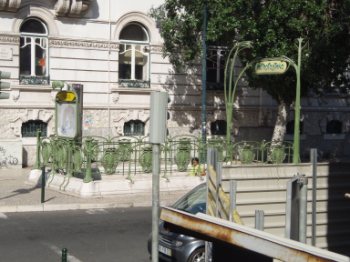Lisbon

Beez Neez now Chy Whella
Big Bear and Pepe Millard
Fri 29 Aug 2008 23:58
|
Lisbon
Lisboa or in English, Lisbon is the
capital city of Portugal. We took the 4.20 euro return ticket, got on the train
from Cascais and half an hour later stepped out into a thriving city.
Immediately we loved the place.

  Bear and King Jaoa I, The first
square we got to after a ten minute walk form the train station. The Rua Augusta
Arch showing its size. The back right corner of the square was the only place we
could buy our tour bus tickets. The tours were divided into four, red, blue,
yellow and tram. Joint ticket 30 euros or 14 each. We bought blue tickets as it
took in Belem Tower ( own blog ), my personal favourite monument from school
days. We walked up to the castle first ( own blog ), not the best plan in
23 degrees and bright sunshine, quite a climb up many steps, through skinny old
streets.
   The very beautiful Town Hall.
The Elevador de Santa Justa or the lift of St Just, built in 1900 and stands 45
meters high. A clock set into the rear of The Rua Augusta archway.
 
 The building on the left is the
original Train Station with its horseshoe shaped doorways, the right is the
corner of the Town Hall. Each lamp on the side of buildings has a small ship
inset, the Portugese are very proud of their sea-going adventurers, especially
Vasco da Gama who discovered Brazil and began a trade route with India. The Eden
Theatre complete with trees growing in the elaborate frontage.
   Bear on a happy street. The national
costume of Portugal. One of the many trams seen in the city. There is a rail
museum where you can see an original open-topped tram from 1910 ( the oldest
surviving in Europe ). There are museums for just about anything, Electricity,
the Orient, Gulbenkian ( own blog ) Ancient Art, Religious Art, Marine,
Military, Archaeological, National Costume and Tile.
 
 Main street of the city, the pink
building is the Hard Rock Cafe showing just how the modern world has been
incorporated into the traditional buildings. This water fountain dates back to
the early 19th century, each side of the long water feature are tiled walkways
in traditional patterns of waves and stars. Tiles are just about
everywhere throughout Portugal, they were first used in the 1820s.
One of the Metro entrances with very
ornate green metalwork. You can just see a little Smart car at the
traffic lights, the main dealer has thriving trade, you see hundreds of these
popular little cars.
 
 This fabulous bull fighting arena
seats 6,500 for its Thursday night fights. In Portugal the bull is never killed
in the ring and all fights are from horse-back, another skill they are famed
for. Middle photo shows a landmark building which houses many exhibitions and is
the centre for commerce and banking. We jumped off the bus here to walk to the
Gulbenkian Museum. When we got back on a tour a tour bus after an hour in the
museum we drove past the Aquaduct, didn't get a very good photo of it but it has
the largest stone arch in the world being 66 meters high and 40 meters wide.
This aquaduct carries water over a distance of 58 kilometers from Belas (Queluz
) as far as Amoreiras by gravity. Its construction took 100 years, but it
started operating in 1570. A monumental work.
All the main buildings along the
River Tagus were originally owned by Royalty and the rich and famous, after
the country became a Republic the buildings were given over to good causes, this
one is a hospital named after Antonio Egas Moniz, born in 1874 in Avanca,
Portugal. He was a neurologist who gained fame by being the inventor of the
prefrontal leucotomy, later changed by the Americans to lobotomy. He was awarded
The Nobel Prize in 1949, jointly with a Swiss neurologist called Walter Rudolf
Hess, perhaps not a great name to have????.
  
The Presidential Palace is another of
the buildings along the front, we think the pink is a bit dodgy. St Jeronimos
Abbey was founded in 1502 by Dom Manuel I, it marks the epoch of maritime
expansion. Erected on the site of the former Restelo Beach, the starting
place of the Caravels and Naos boats for the Great Discoveries. Inside the
Manueline decoration, the outer Gothic lines. The tombs of Vasco da Gama, Luis
de Camoes and Alexandre Herculano can be found here.
 The view from the park named after
our Edward VII who visited the city often, shows the Portugese fondness of the
English. The Castle can be seen in the trees up on the left. We thoroughly enjoyed our day in this most interesting city.
It had been my ambition to get off the train with loads of fancy paper carrier
bags from some of the major department stores, the biggest shopping centre has
three hundred shops and is a landmark building with much celebrated
architecture, just didn't have the time - Bear and Visa card very
pleased.
|